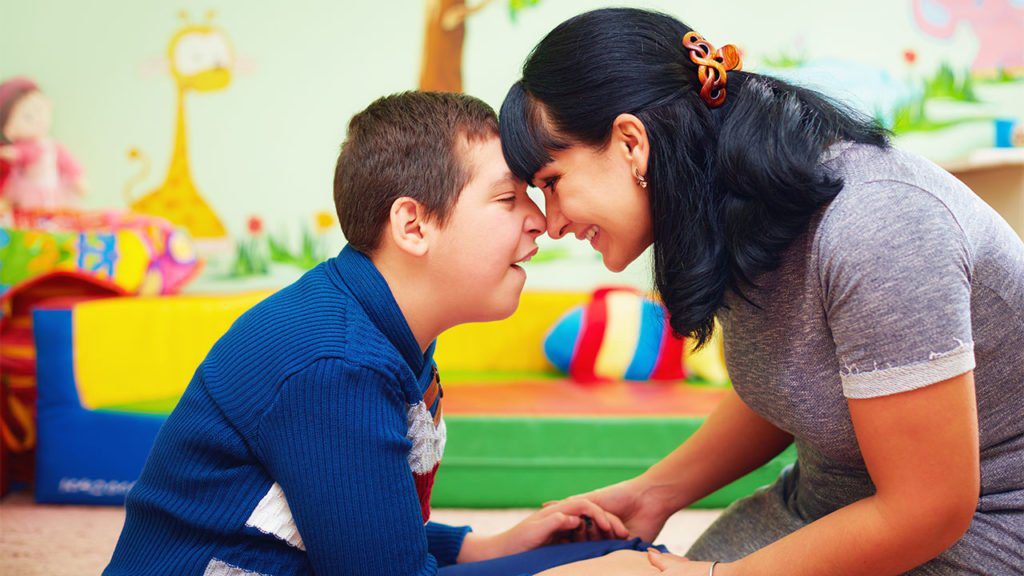Autism is a complex neurobehavioral condition which includes social, developmental and behavioral impairments. They lack communication skills and are associated with repetitive behaviors. Autism is also associated with sensory hyperactivity and medical conditions such as gastrointestinal (GI) disorders, seizures or sleep troubles, anxiety, and depression.
It is also called autism spectrum disorder (ASD). The disorders included in the category of ASD are:
Asperger syndrome, childhood disintegrative disorder, pervasive developmental disorders not otherwise specified. The symptoms can either be congenital or may develop as the child becomes older. As it is a spectrum disorder, genetic and environmental factors, play an important role in influencing the set of strengths and challenges, of every particular individual.

Symptoms:
Symptoms usually occur during the first three years of life. Some show signs from birth while others slip suddenly when they are 18 to 36 months old. It is 4 times more common in boys than in girls. It has no racial, ethnic, or social bars.

Some of the prominent signs to look out for an autistic child are:
Abnormal body posturing, or facial expressions.
Avoiding eye contact while talking.
Language comprehension troubles, delay in learning to speak.
Awkward social interaction.

Emotionally unavailable.
Learning disability.
Preoccupation with only specific topics.
Repetition of words, phrases, or movements.
Sleep disturbances.
Higher IQ levels than peers.
Associated mental retardation.
Risk factors:
The cases of Autism increasing; according to reports 1 in 59 children is diagnosed with Autism in the United States. As it runs in families, most researchers speculate that some combinations of genes are responsible for a child to be autistic. Also, the advanced age of the parents increases the chances of an autistic child.
Diagnosis and treatment:
As ASD is a spectrum disorder, there are a variety of treatment modalities which include different therapies to improve speech and behavior, and sometimes medications are prescribed to help manage the other medical conditions associated with it.
There is no permanent cure for autism; however, the goal is to reduce the symptoms and improve his learning and development.
Some common therapies are:

Applied Behavior Analysis (ABA)
ABA is usually used in schools and clinics to inculcate positive behaviors and eliminate the negative ones. It includes :
-Discrete trial training (DTT) that uses simple lessons and positive reinforcement.
-Pivotal response training (PRT) which encourages better communication skills.
-Early intensive behavioral intervention (EIBI) is best for children under 5 years of age.
-Verbal behavior intervention (VBI) primarily focuses on language development.
Developmental, Individual Differences, Relationship-Based Approach (DIR): Also, known as Floortime, because it involves interaction with the child directly and indulges in activities which he likes doing.
Treatment and Education of Autistic and Related Communication-handicapped Children (TEACCH): In this the child is trained to perform his daily activities like wearing clothes, eating his meals, etc, using visual cues.
The Picture Exchange Communication System (PECS): This is another visual-based therapy; however, uses symbols instead of picture cards.
Occupational Therapy. This therapy helps the child to learn basic life skills and allows him to live as independently as he can.
Sensory Integration Therapy: Helps controlling sensory hyperactivity.

Medications:
Medications are effective when they are combined with behavioral therapies.
Risperidone (Risperdal) is the only medicine approved by the FDA for children with an autism spectrum disorder, to help with irritability.
Some physicians may prescribe, selective serotonin reuptake inhibitors (SSRIs), anti-anxiety medications, or stimulants, for seizures and fits.
Nutrition and diet plan :

These children tend to have less dense bones, so bone-building foods stuff are important. Consulting a dietician is preffered.







